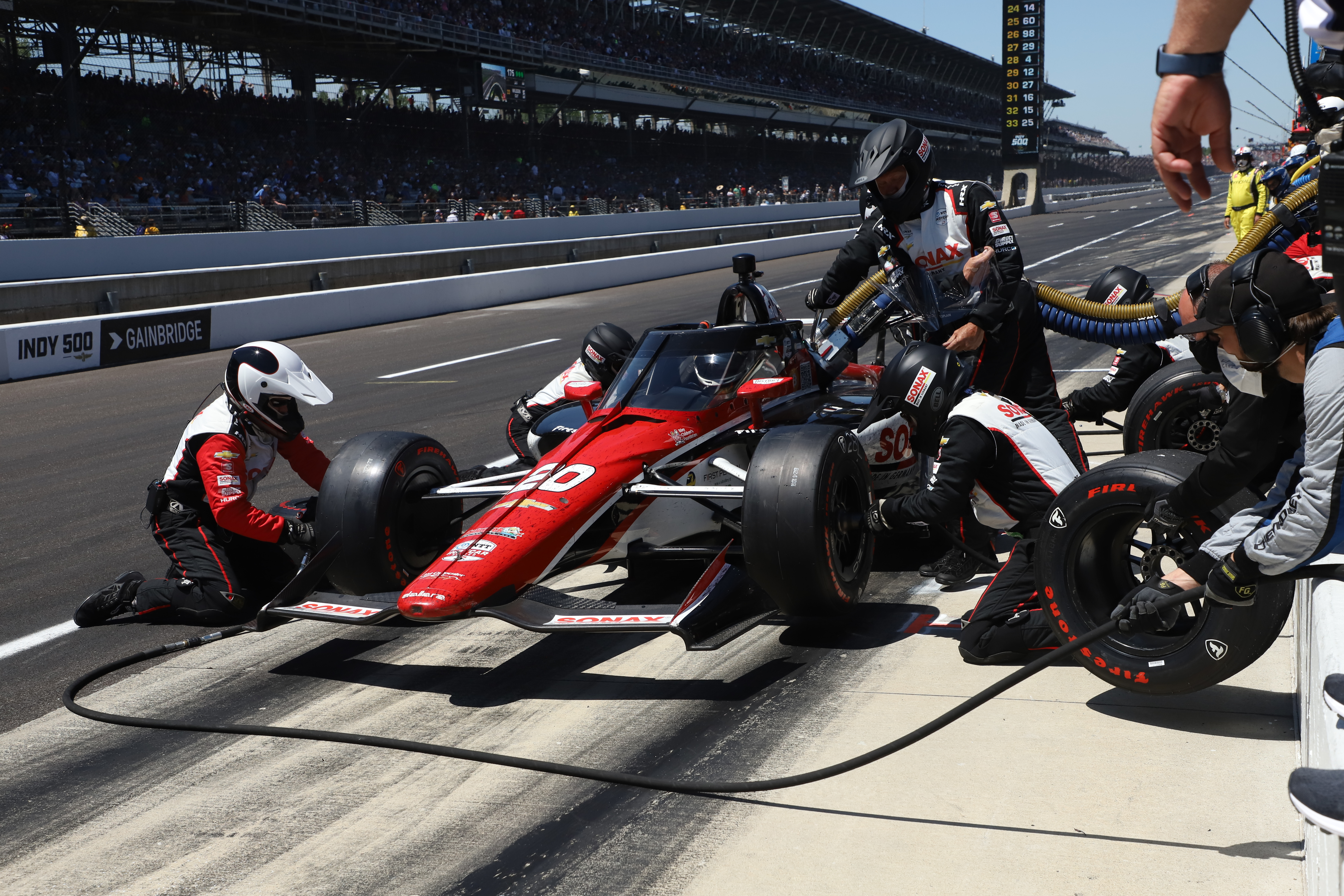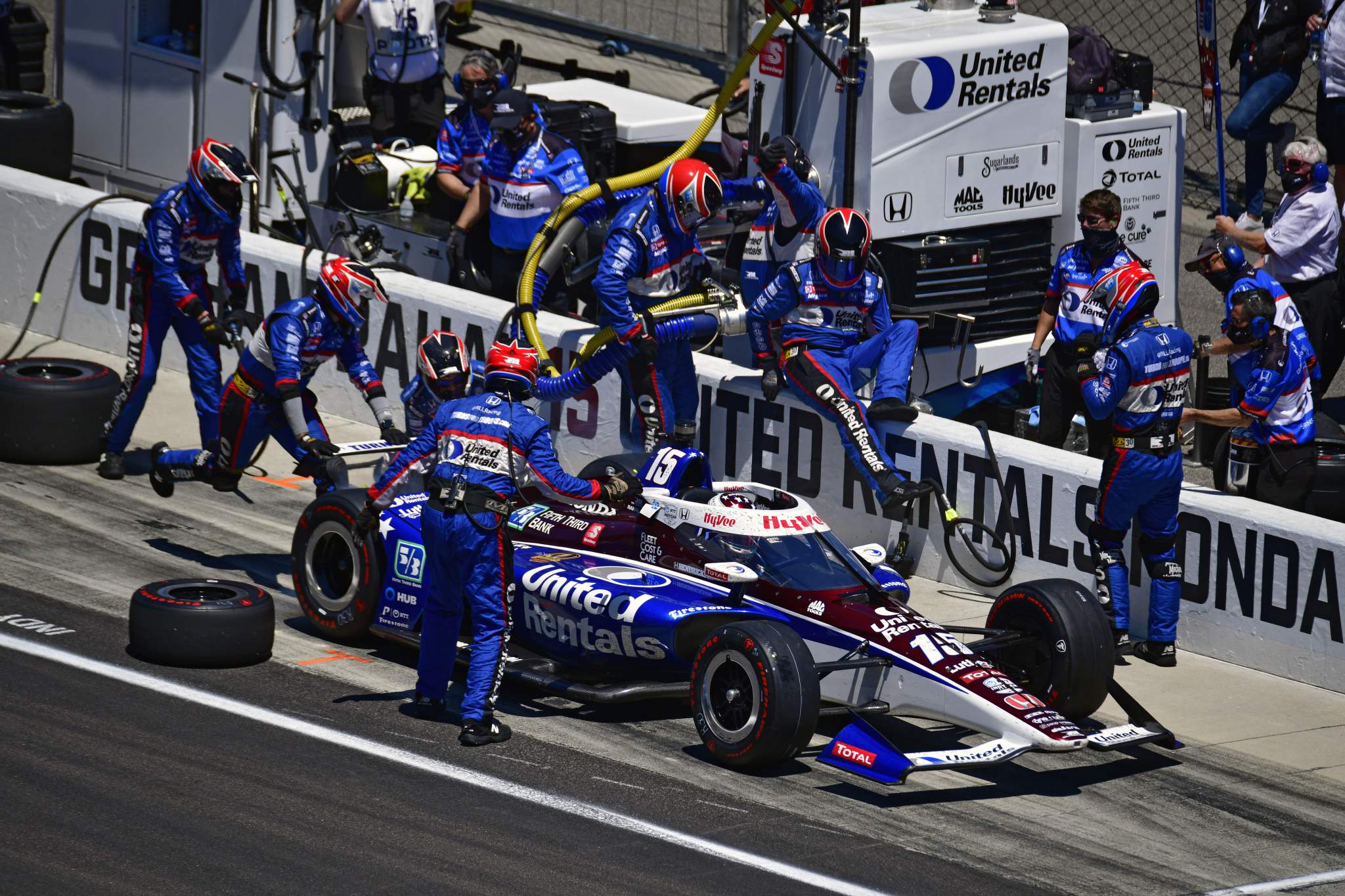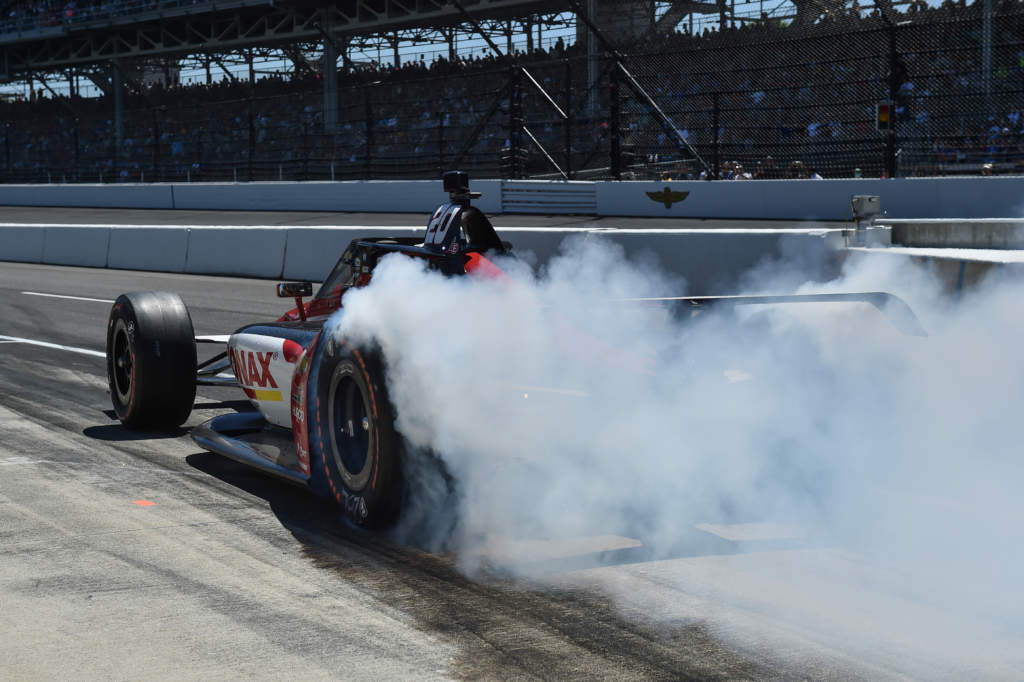When you get so few cautions in an Indianapolis 500 – and when the leader is backing up the pack and there’s heavy fuel saving – the window for trying outlandish or unusual strategy calls diminishes.
As we saw in last Sunday’s race, with everyone close together on track, that puts so much of the pressure on the IndyCar pit crews to nail a seven or sub-seven second fuel-and-tyre stop to allow their car to move up the order.
But there’s more to it than that.
It’s here that fans are potentially missing out on one of the hidden arts of IndyCar racing, not just at the Indy 500 but in the championship as a whole, and that’s the drivers’ in- and out-laps.
When a driver gains or loses spots in the pits, immediately the attention goes to the pit crews and this is what creates the high pressure environment in the pits. That’s no different anywhere in motorsport.
However, drivers and teams practice attacking in- and out-laps in practice, such is the potential for gains. Yet in the race we see little of the driver’s role in a pitstop.

If a driver pits and loses four spots, most fans’ minds immediately jump to the pit crew of that team and potentially blame them for the issue.
Firestone sponsors a pitstop competition each year to find the team with the best pit crew, this year based on least time spent on pit road.
But wouldn’t it be great to get a better idea of the drivers’ involvement in pitstops? After all, it’s vital.
Go up and down pitlane and people like Patricio O’Ward are mentioned in the conversation of drivers putting in the work on a pit exit or entry, with his now trademark fast hands and car control. Gateway last year was a fantastic example at how much he was hustling on his out-laps, often sideways exiting the pits on the gas.
With pitstops being so important, merely braking 50 metres early for the pits or lifting off the throttle exiting on the out-lap because you’ve been too aggressive could have a massive impact on the race.
The good news is, this data is available. The Race had to sift through a 349-page document following the Indy 500, but IndyCar provides timing from the start finish line to the pit entry line for each driver’s pitstops.
It also provides data for the pit exit line to the start finish line, to provide an idea of out-laps too.

This is all readily available to fans online after the race, but how many fans have the time to go through 300 pages to understand a small part of what makes a race play out the way it does, even if it is crucial?
You could monitor this across the season and there would almost certainly be trends of drivers who consistently are among the fastest on in-and out-laps, thus likely making up a significant number of positions in races, and are likely towards the sharp end of the championship because of it.
From the Indy 500, Alex Palou was consistently faster than eventual victory rival Helio Castroneves on in- and out-laps, which allowed him to hold track position for much of the race. It was only a well-timed move on the track that allowed Castroneves to take the win.
Just behind, Simon Pagenaud was rapid in the last stint, but he took a net 1.2 seconds out of Castroneves across the out- and in-laps on the final stop, which allowed him to get closer to that pack in the closing stages as he completed his rise from 26th on the grid to third.
Last pitstops in the Indy 500 (drivers listed in finishing order)
Start finish line to pit-in line
Castroneves 41.3357s
Palou 41.1104s
Pagenaud 40.8859s
O’Ward 41.3581s
Pit exit line to start finish line
Castroneves 44.0688s
Palou 43.4982s
Pagenaud 43.3761s
O’Ward 42.7454s
For more context, Will Power managed to nail an in-lap of 38.9361s on his lap 152 stop, which was the best in the 500.
At the front of the field where it was relatively easy to pass on track, the in- and out-laps may have been slightly less important, but further back they can be vital.
Especially if we zoom out and think about a road course. Losing 1.2s just on entering and exiting pits, that could be five or so positions in some of the races we’ve seen this season.
It’s not an exact science monitored this way because it doesn’t measure cars from their pit boxes, it has to rely on the timing lines. But there’s not a massive amount of time to be made going from a standstill to pitlane speed, before reaching the pit exit line for example.
So the numbers IndyCar provides are close enough to get a real idea of what’s going on.
Where it would be great to see strides forward – and I understand this probably isn’t high on the list of things to do amid a pandemic – is presenting this data live, to fans.
To the best of The Race’s knowledge, this stat has not been presented on a regular basis as part of live TV or app coverage, and we have contacted IndyCar to check this.
The IndyCar Series has just announced an extension of its title sponsorship with NTT Data, which among many other things powers the IndyCar App, which is a great tool to watch races with timing and onboard cameras that also feature radio.
With NTT’s expertise behind the scenes, it’s not impossible to think that it could provide some pit in and out rankings both to the TV viewer and for the app, even if it’s five or 10 minutes after the fact, as strategies are so often varied that it’s fair to factor in some computing time.
So if you’re reading, NTT, please make it a priority to factor in- and out-laps into consideration for what things to bring to the fans next, as it’s a key battleground in IndyCar we hear about so infrequently.

It’s by no means a criticism of the series or its partner as I can’t think of any other championships offering this data. It’s just that the racing is so close that this is becoming a vital battleground and we’d understand so much more about the series if we had access to it in a simple-to-digest way.
I should be doing more to explain how this impacts races, too.
It could also help take some pressure off the pit crews who may incorrectly be blamed for a driver losing places in the pit phase when in actual fact it could be a driver error.







